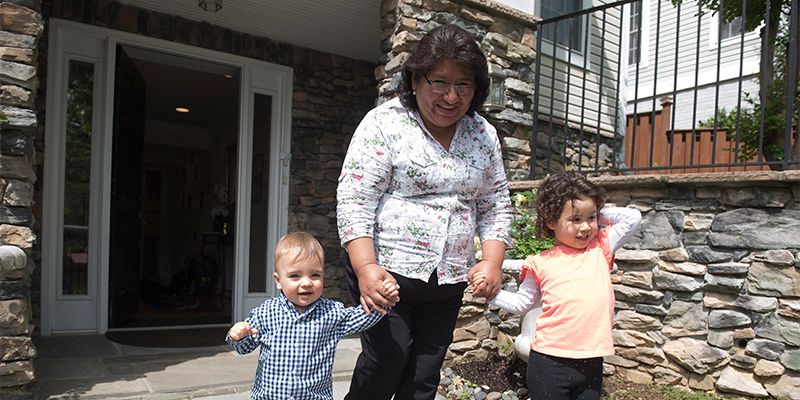
July is the hottest time of year for much of the United States, according to the Weather Channel. With relative humidity and actual air temperature both peaking during the later summer months, the end of summer can be especially hazardous to children playing outside. Rather than just sweating it out and complaining about the heat, it’s critical to learn how to keep parents, child care providers and children safe when playing outside this summer.
First, a quick definition: The heat index is a measure of how hot it actually feels when relative humidity is factored in with the air temperature. For example, if the air temperature is 90˚F and the relative humidity is 85 percent, the heat index—how hot it feels—is 117˚F.
Second, you will often hear notices about heat advisories, heat watches and excessive heat warnings. Pay attention and know what each of these important notices mean.
Heat Advisory
- Issued within 12 hours of the onset of extremely dangerous heat conditions (heat index is expected to reach between 105-109˚F in the next 12 to 24 hours)
Excessive Heat Watch
- Issued when conditions are favorable for an excessive heat event (heat index feels like 110˚F or higher) in the next 24 to 72 hours
- A watch is used when the risk of a heat wave has increased, but its occurrence and timing are still uncertain
Excessive Heat Warning
- Issued within 12 hours of the onset of extremely dangerous heat conditions (heat index feels like 110˚F or higher within the next 12 to 24 hours)
- General rule of thumb is when the maximum heat index temperature is expected to be 105˚F or higher for at least two days, and the night time air temperatures will not drop below 75˚F
Also, keep in mind that exposure to full sunshine can increase heat index values by up to 15˚F!
Children rely on others to regulate their environments and their fluid intake. Because of this, it is important for child care providers to monitor the weather. As the weather changes, so do the things children need to ensure their bodies stay in relative temperature homeostasis (a stable, relatively constant temperature). Without close, proper monitoring of the weather conditions, especially during hot summer months, children are at greater risk for dehydration and heat-related illnesses.
Heat Related Illness
There are three types or heat-related illnesses:
Heat Cramps
Heat cramps are the mildest form of heat illness, consisting of painful muscle cramps and spasms that occur during or after intense exercise and sweating in high heat. These cramps are intermittent, involuntary spasms of muscles that occur in an individual who is physically active in hot or humid weather.
Symptoms of heat cramps include flushed, moist skin. The muscles most affected are:
- Quadriceps
- Hamstrings
- Gastrocnemius
- Abdominal muscles
- Back muscles
- Biceps
- Triceps
Heat Exhaustion
Heat exhaustion is more severe than heat cramps, yet not as severe as heat stroke. It occurs in conditions of extreme heat and excessive sweating without adequate fluid intake and salt replacement. Heat exhaustion occurs when the body is unable to cool itself properly and, if left untreated, can progress to heat stroke.
Symptoms of heat exhaustion include:
- Feeling faint or dizzy
- Fever over 100˚
- Excessive sweating
- Cool, pale, clammy skin
- Nausea or vomiting
- Rapid, weak pulse
- Muscle cramps
- Diarrhea
- Weakness
Heat Stroke
Heat stroke is the most severe form of heat illness. It occurs when the body’s heat-regulating system is overwhelmed by excessive heat. It is a life-threatening emergency and requires immediate medical attention.
Symptoms of heat stroke include:
- Throbbing headache
- No sweating
- Body temperature above 103˚F
- Red, hot, dry skin
- Nausea or vomiting
- Rapid, strong pulse/heart rate
- Loss of appetite
- Confusion
- Agitation
- Lethargy
- Possibility of seizures, coma and death
Armed with a better understanding of what the various heat-related weather warnings mean, and what to look for when there is a possibility of heat-related illnesses, you’re better equipped to have a safe, enjoyable summer. Have fun!
Resources
- National Weather Service
- Heat-Related Illnesses – Johns Hopkins Medicine
- Beat the Extreme Heat
- July 31 is National Heatstroke Prevention Day
- Getting the Wiggles Out: A tool for providers and families stuck inside due to high heat
- Warm and Cold Weather Guide




